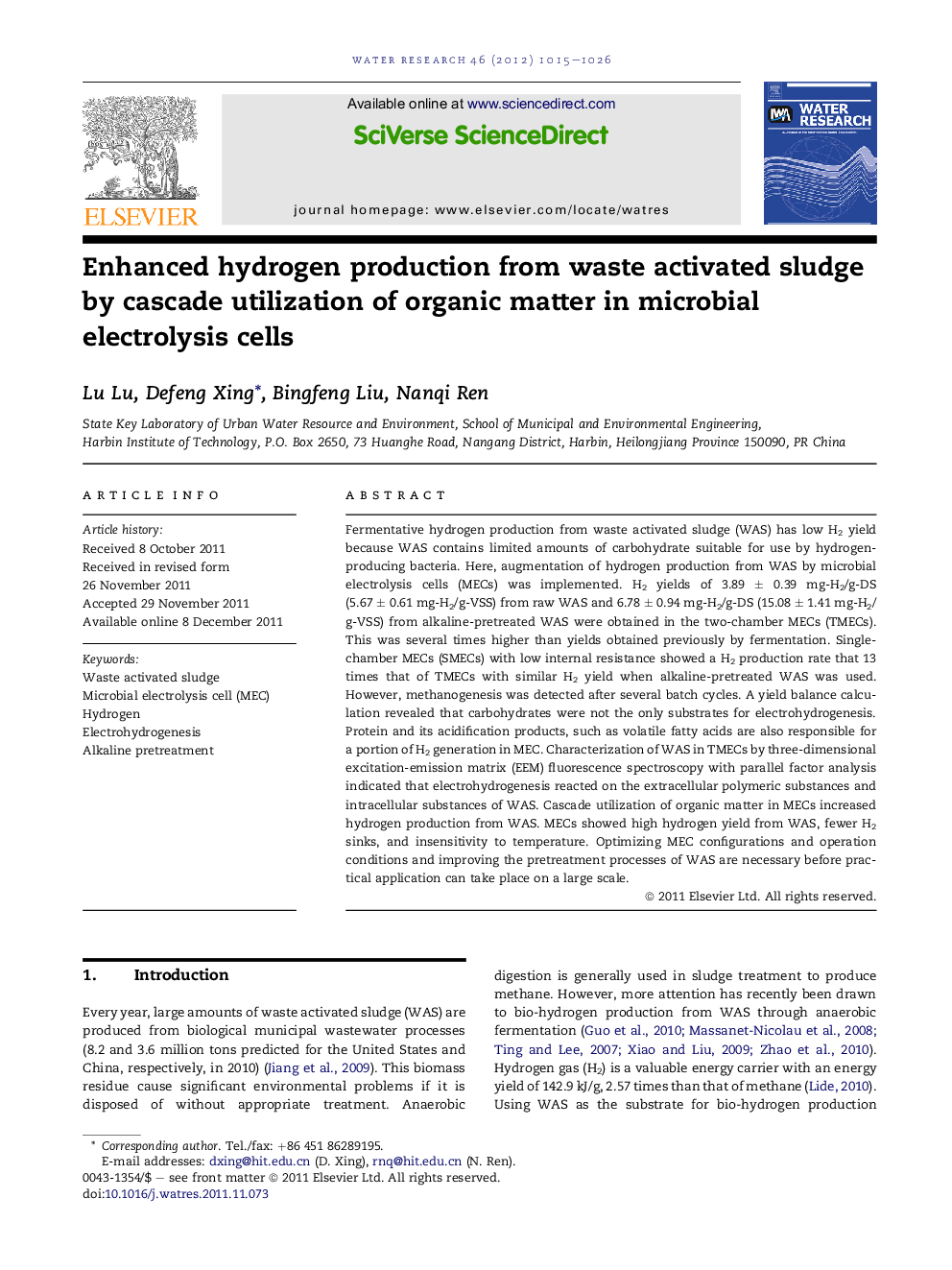| کد مقاله | کد نشریه | سال انتشار | مقاله انگلیسی | نسخه تمام متن |
|---|---|---|---|---|
| 4482870 | 1316872 | 2012 | 12 صفحه PDF | دانلود رایگان |

Fermentative hydrogen production from waste activated sludge (WAS) has low H2 yield because WAS contains limited amounts of carbohydrate suitable for use by hydrogen-producing bacteria. Here, augmentation of hydrogen production from WAS by microbial electrolysis cells (MECs) was implemented. H2 yields of 3.89 ± 0.39 mg-H2/g-DS (5.67 ± 0.61 mg-H2/g-VSS) from raw WAS and 6.78 ± 0.94 mg-H2/g-DS (15.08 ± 1.41 mg-H2/g-VSS) from alkaline-pretreated WAS were obtained in the two-chamber MECs (TMECs). This was several times higher than yields obtained previously by fermentation. Single-chamber MECs (SMECs) with low internal resistance showed a H2 production rate that 13 times that of TMECs with similar H2 yield when alkaline-pretreated WAS was used. However, methanogenesis was detected after several batch cycles. A yield balance calculation revealed that carbohydrates were not the only substrates for electrohydrogenesis. Protein and its acidification products, such as volatile fatty acids are also responsible for a portion of H2 generation in MEC. Characterization of WAS in TMECs by three-dimensional excitation-emission matrix (EEM) fluorescence spectroscopy with parallel factor analysis indicated that electrohydrogenesis reacted on the extracellular polymeric substances and intracellular substances of WAS. Cascade utilization of organic matter in MECs increased hydrogen production from WAS. MECs showed high hydrogen yield from WAS, fewer H2 sinks, and insensitivity to temperature. Optimizing MEC configurations and operation conditions and improving the pretreatment processes of WAS are necessary before practical application can take place on a large scale.
Figure optionsDownload high-quality image (157 K)Download as PowerPoint slideHighlights
► Augmentation of H2 production from raw waste activated sludge by MECs is here implemented.
► H2 yields are several times higher than those obtained previously by fermentation.
► The use of alkaline-pretreated waste activated sludge nearly doubled H2 yields.
► Cascade utilization of organics is responsible for high yield.
► MECs show fewer H2 sinks and insensitivity to temperature.
Journal: Water Research - Volume 46, Issue 4, 15 March 2012, Pages 1015–1026